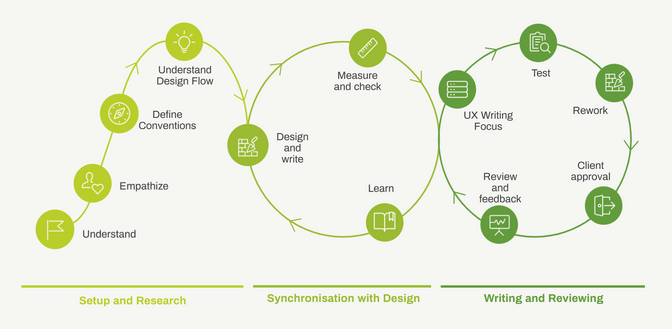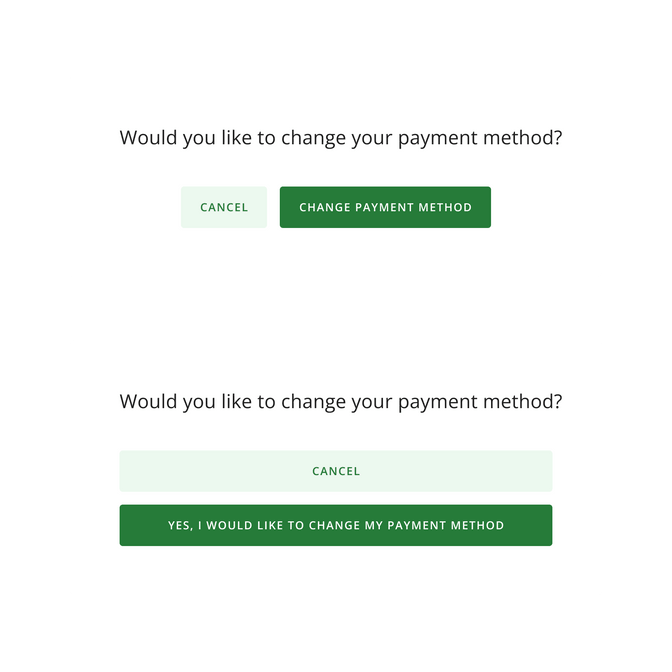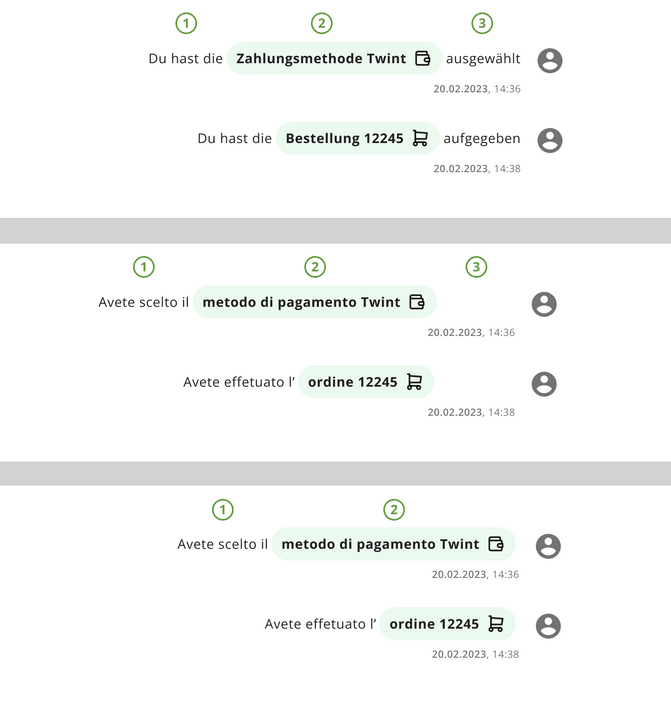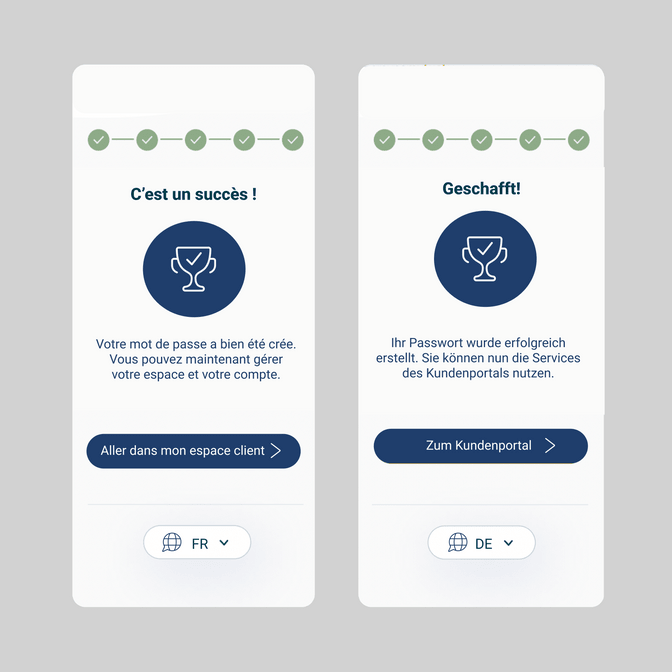Context
Who doesn’t know the frustration of a website or application that is confusing, poorly translated, or even not understandable at all? The challenge for businesses located in Switzerland is that they need to address a multilingual audience in their communication and digital product. If the writing and translation are treated as an afterthought, it will leave particular language groups feeling left out, and in the worst case, these users will not adopt your digital product.
Research has long shown that people treat computers like humans: They apply social rules and expectations, leading them to expect computers to show social behaviours like politeness. This is mainly due to 3 characteristics:
Computers have words as output.
The interactive nature of the exchange. The computers react to human inputs.
Computers or their applications, more specifically, fill roles traditionally held by humans.
So let’s take the example of a business based in German-speaking Switzerland that would like to develop an app to serve its whole customer base. German is the sole language used during the conception phase, while French and Italian will only be added later. This decision has great impact on business, as it discriminates approximately 30% of Swiss users without even considering people with yet another first language.
At Liip, we emphasise the benefits of creating digital products with high-quality content across languages. This is where UX Writing comes in to guarantee a satisfying customer experience for everyone: It is centred around writing texts that address people’s contexts, needs and behaviours. Where designers use colours and fonts, the User Experience Writer uses words to guide the user throughout an experience. We achieve a smooth and delightful user experience through transcreation; the iterative creation process between the design, the source language and the target language.
The benefit of transcreation over simple translation lies in the context: Translators usually work using software where they don’t see the design and where the words they choose will go in the end. Even as experts in a certain language, they lack contextual cues, which makes it difficult, if not impossible, to hit the tone appropriate at that point of the user journey. Knowing this, businesses should carefully consider which markets they would like to target and add a UX Writer to their design team. Groupe Mutuel is one of our clients who have chosen to work alongside our German and French UX Writers from the outset:
Previous projects have shown that translation has its limitations when taken out of the design context. Insurance topics can be particularly difficult to understand for people, and we wanted to provide users with the best possible guidance through both the visual design and the language we chose. Working with UX Writers during the design process leads to high-quality designs that, in the end, enable us to deploy faster. – Kamel, Strategic Project Manager at Groupe Mutuel
Writing for a leaner design process
Our team of UX Writers has used transcreation in numerous projects, with adaptions here and there depending on the client’s needs and the project requirements. To demonstrate the process, we will work based on a generalised workflow and show examples from various projects and language set-ups.
Process Overview

What looks like a linear sequence of tasks is characterised by the overlap of phases, and some of the tasks are completed numerous times; for instance, when requirements change or feedback is received.
Set up and research
As a first step, a language of reference is defined to start working from a model. The UX Writers collect material from the client regarding brand guidelines, Tone of Voice and, for digitally mature clients, UX Writing Conventions. If there are no UX Writing Conventions yet, they must be defined to assure consistency across the digital ecosystem. Unlike brand guidelines, UX Writing Conventions significantly overlap with design and look at writing patterns across the user journey, and in certain technical elements, such as buttons.

The Conventions will document the preferred pattern for buttons, indicating where the primary action is placed (either left/right or top/bottom). Additionally, the UX Writers decide on how conversational buttons should be, which impacts the length of the copy and thus has direct consequences for the design as a whole: More conversational copy tends to be longer, and these buttons will consequently take up more space. Defining these patterns from the start saves designers time along the way.
Synchronisation with design
When defining the patterns, the UX Writers are constantly exchanging with the designer to consolidate the design expertise with their linguistic knowledge. Before the UX Writers can start writing, they must understand the design flow and the user journey. In this phase, they might have certain inputs on how much information to present on each screen and what formats might work best for the copy. The benefit of involving writers early, is that there is no need for lorem impsum placeholders in the design. As a result, copy and design can evolve together.
UX Writers are the perfect partner for a designer with a complementary set of skills. Their knowledge in Information Architecture, storytelling, Tone of Voice and so on is unbelievably precious. – Darja Gartner, UX Designer at Liip
Working with the “right copy” from the start accelerates the creation process, and it also saves time as fewer design iterations are needed. When designers create their designs, they play with the forms and layouts of an interface. Having to check their designs against other languages during these iterations helps them verify that the interface works for other language patterns.

The sentence structure for German and the Romance languages is entirely different, leading to varying design and code requirements depending on the language. For example, on a B2C platform where the changes to the order are visualised in an activity log, there were 3 strings for German, but only 2 strings were needed in French and Italian. The empty third string in the Romance language left the date stamp floating between the two activities. The designer then had to adapt the design for these two languages, and the developers had to make sure that the empty fields in the translation files would not default to show a German string. Design and content create synergies, quickly resulting in a near-finished design that will easily pass the pre-release testing. Once the first version of the design is approved by the client, the writing is polished and finalised.
Writing and reviewing the source language
The UX Writer of the source language starts the writing process, which delivers the polished copy in clean design frames for the UX Writing partner to work with. During the writing process, both writers are frequently exchanging, the UX Writer of the source language comments on challenges and impactful changes that could be relevant for the other language as well. The writers need to reflect on the right wording, and check it with the client’s translation or communication team to ensure consistency. Once the copy is reviewed and finalised, the client will be asked to validate it before the UX Writer of the target language takes over.
While the source language copy is waiting for approval, the UX Writers need to keep track of the requests made by the client and changes that the designer might make in the meantime.
Writing and reviewing target language
The second writer starts writing the copy of the target language, using the source language as the base for their work. What happens here is more than translation: The writer thinks in their own language, which comes with different communication practices and culture. Some instances where the translation of the copy would not have been appropriate to the target audience include:
1. Varying politeness for different languages
Depending on the language, politeness is lived and linguistically manifested differently. While all three languages, German, French and Italian, have two politeness levels (du/Sie, tu/vous, tu/Lei), they are characterised by different tones and directness.
Liip has conducted User Research that has shown that German-speaking users prefer a polite address when they are not onboarded yet. After the onboarding, using the more personal “Du” was perceived as appropriate. The user’s behaviour towards the digital product mimics how human communication works: Once you have introduced yourself, you may use a more informal tone. However, what holds true for German does not apply to French or Italian. Both Italian and French are less straightforward, and their speakers felt estranged from the personal address after the onboarding.
2. Cultural-specific expressions
Success messages were another instance where the cultural context impacted the writing significantly. The same information, in this case, the creation of a password, had to be presented differently. Again, German was factual and straight to the point (“Done!”). For French-speakers on the other hand, the celebration of the completed task allowed to have some more weight (“What a success!”).

Once the copy of the target language is completed, it undergoes the same approval process by the client. If no more changes are needed, the design and both languages are ready to be handed over to production.
Done! A first prototype now stands, which would be validated with more or less extensive user research as a next step, depending on the project.
Takeaways
Looking over the shoulder of our skilled UX Writers, you have learned
- Having writers in your team energises the design process and improves design quality.
- Higher quality designs mean fewer iterations, meaning saved time, and a design that holds true even for edge cases.
- Going beyond translation means fine-tuning the whole User Experience to another language and culture so that your User Experience meets the needs of your audience.
- User research in different languages ensures that your product hits the right tone for the culturally different audience for broad adoption.
- Our team of Liip UX Writers can enable any project design team with their English, German, French and Italian language skills and cultural knowledge.

